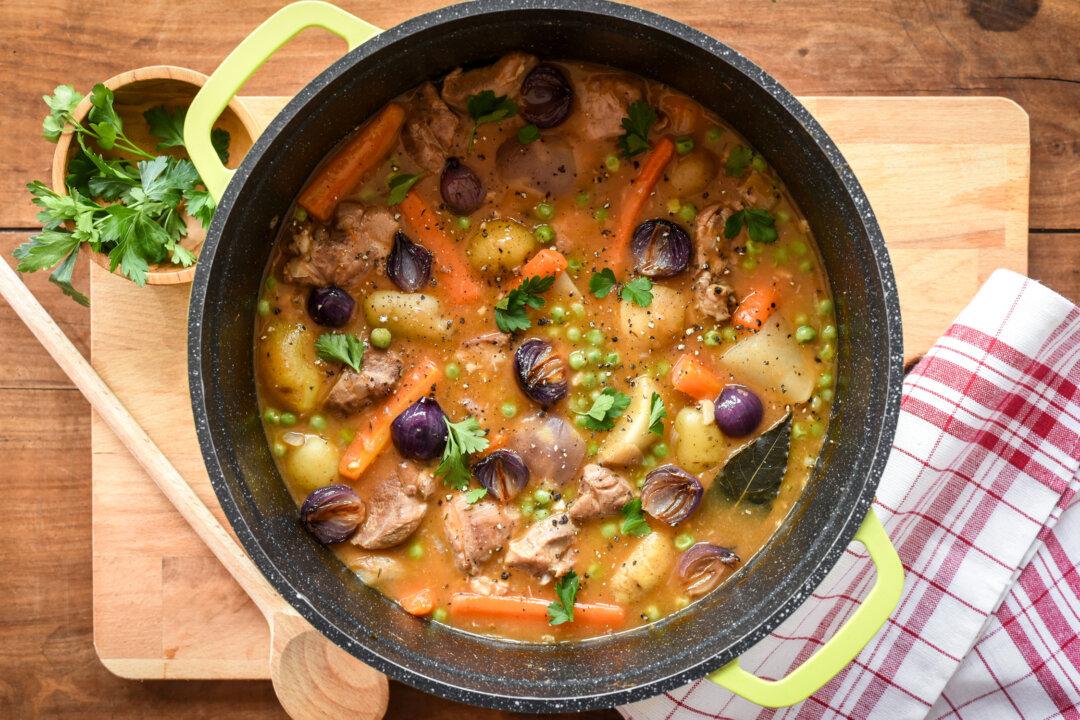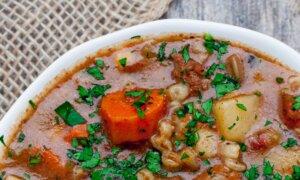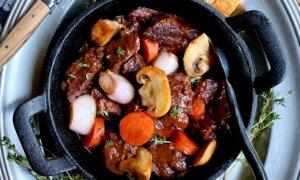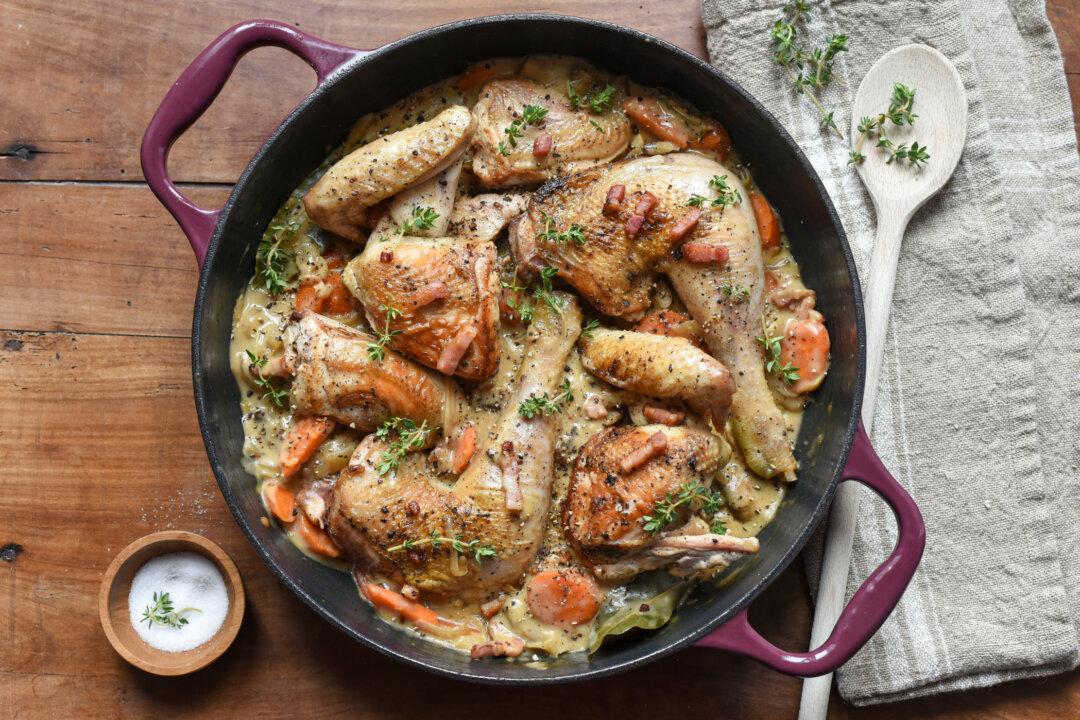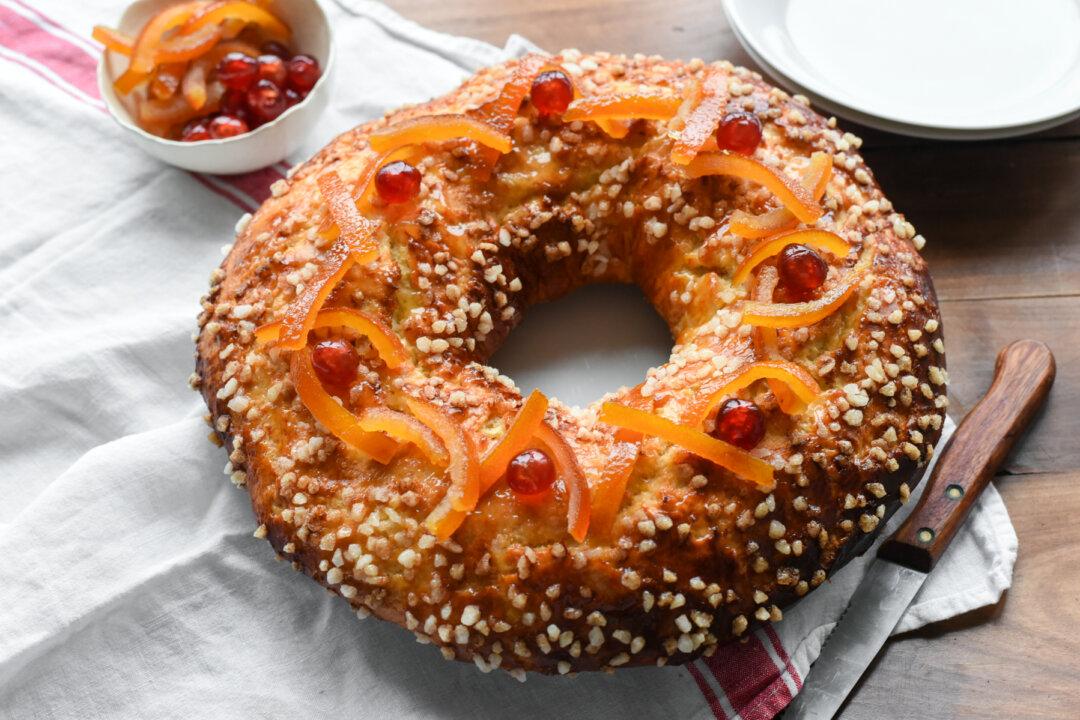Lamb navarin, or “navarin d'agneau,” is a classic French dish made with lamb, vegetables, and aromatic herbs. It’s a flavorful, light, and satisfying stew that is often enjoyed as a way to wave farewell to winter and say hello to spring and its array of colorful, in-season vegetables. It’s the perfect time of year to embrace this comforting classic, which is most commonly served during Easter celebrations in France.
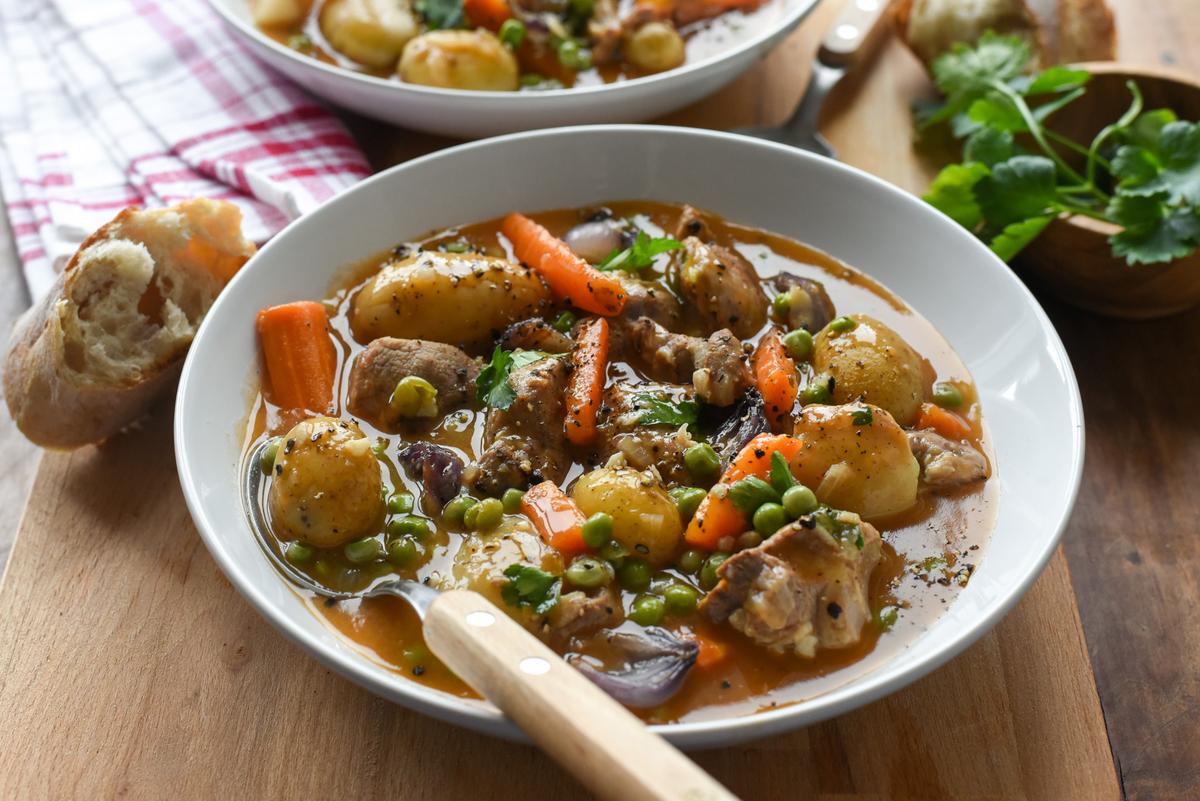
This classic French stew has a lighter body and a generous serving of vegetables. Audrey Le Goff
The History Behind the Dish
The name “navarin” is thought to derive from the 1827 Battle of Navarino, which took place in Navarino Bay on Greece’s Peloponnese peninsula, during the Greek War of Independence. It was an intense battle where a coalition of Russian, English, and French forces won against the Turkish–Egyptian fleet of the Ottoman Empire.To celebrate this victory, French admiral Henri de Rigny ordered his chef to prepare a lavish dish, instead of the usual “rata”—a rough stew of leftover meat and vegetables—served to his soldiers. Inspired by the local Turkish-style cuisine, the cook used lamb and garnished it with various colorful vegetables to create a deliciously saucy dish fit for the occasion.
Later, French chef Auguste Escoffier standardized traditional haute cuisine recipes in his comprehensive guide, “Le Guide Culinaire,” which included this recipe. The popularity of his book made this dish a classic of the French cooking repertoire.
Another explanation for the name, far less theatrical, hold that the word “navarin” derives from “navet,” the French word for turnip, which is found in this recipe along with other spring vegetables.
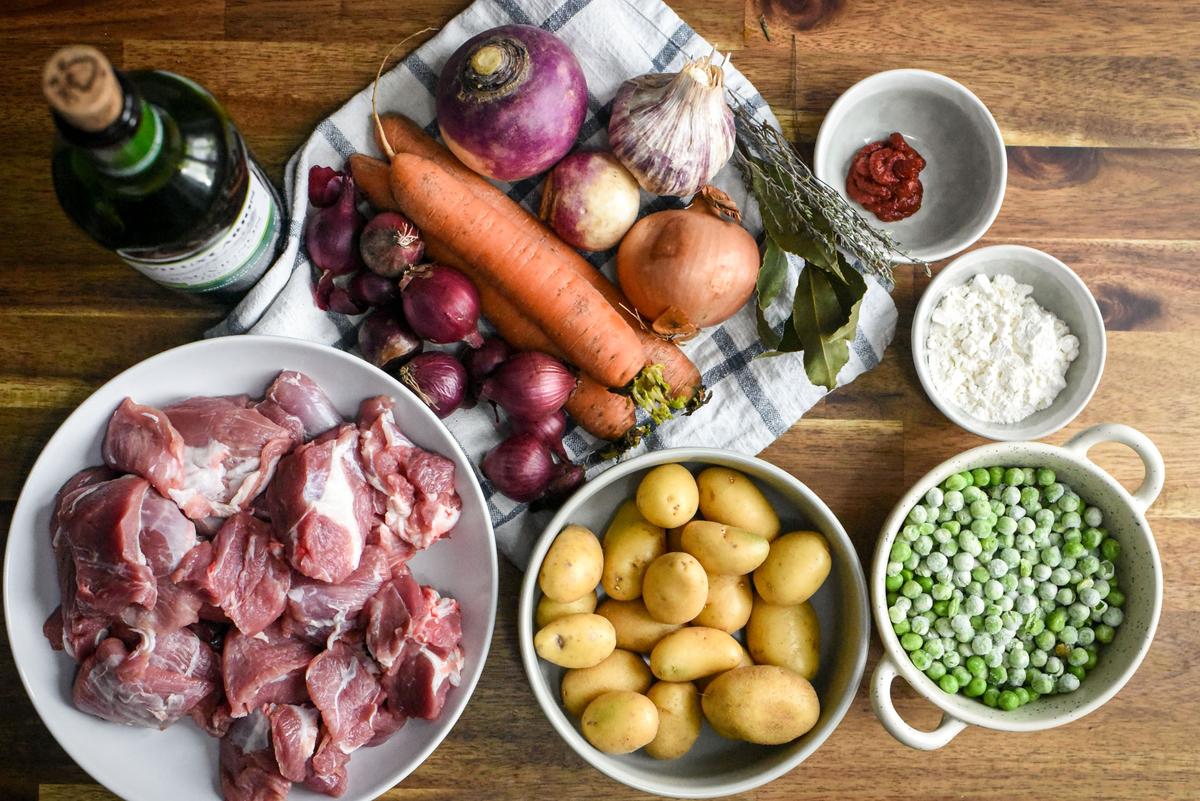
This recipe boasts more vegetables than your typical stew; you can also swap the veggies for what you have or prefer. Audrey Le Goff
A Classic French Stew
Like many stews, lamb navarin requires patience and care but no difficult techniques or ingredients. This is a famous recipe that is often taught in French cooking schools, as it features simple seasonal ingredients and is a great introduction to the classic way of building a French stew: browning the meat first, adding vegetables in a specific order, and then slow cooking the stew until the meat becomes tender and the flavors meld.Here is a detailed look at the ingredients and the process.
The Lamb
Spring is lamb season, making this dish fit for Easter celebrations. Lamb shoulder is often considered the best cut for stews. It has a good amount of marbling, which adds flavor and keeps the meat moist during the slow-cooking process. Ask your butcher to trim the larger fat pieces and cut the meat into two-inch chunks—slightly larger than you would for a classic beef stew.The lamb is browned before being simmered, contributing to the rich flavor of the sauce. Do not rush this process, and make sure the pieces have a nice brown crust before adding the first set of vegetables.
The Vegetables
Onions, carrots, and turnips are staples of lamb navarin. When making it in the spring, new potatoes, pearl onions, and peas are also included, adding variety and color to the stew.First add onions, carrots, and some garlic, and simmer as long as the meat is simmered. Add new potatoes and turnips about 15 minutes before the end of the cooking time, and add peas a few minutes before serving. Follow these staggered cooking times for properly cooked vegetables that keep their optimum shape and flavor.
Last, while some recipes call for simmering the pearl onions in the stew, I prefer to cook and caramelize them on the side to add delicious bursts of sweetness.
The Broth
This lamb stew is cooked in a broth made with white wine and stock. This makes for a lighter stew sauce, both in texture and taste.For the wine, choose one with a lighter body and high acidity to balance out the richness of the meat. Pinot blanc and sauvignon blanc are great choices. For the broth, I prefer a low-sodium chicken or vegetable broth.
Seasonings and Herbs
Very simple seasonings (salt and pepper) and classic French herbs (bay leaf, thyme, and parsley) are traditionally used for lamb navarin, letting the flavors of the lamb and fresh seasonal vegetables shine.Lamb Navarin
This recipe is perfect for 6 people, but you can easily double it for a larger crowd. Swap the seasonal vegetables to your liking—about 2 1/2 pounds of vegetables for every 2 pounds of lamb is a reliable ratio. This recipe boasts more vegetables than your typical stew, making it a balanced meal on its own. Simply serve it with crusty bread on the side for mopping up the delicious sauce. Finally, like most stews, lamb navarin is even better reheated the next day.Serves 6
- 2 pounds lamb shoulder, skin and fat trimmed, cut into 2-inch cubes
- 1 teaspoon salt
- 1/2 teaspoon ground black pepper
- 1 tablespoon extra-virgin olive oil
- 3 carrots, peeled and cut into large sticks
- 1 large onion, peeled and sliced in half rounds
- 3 garlic cloves, peeled and minced
- 1 tablespoon tomato paste
- 1/4 cup all-purpose flour
- 1 bay leaf
- 3 to 4 thyme sprigs
- 2/3 cup white wine
- 4 cups chicken or vegetable stock
- About 12 new potatoes
- 2 medium turnips, cut into large chunks
- 1 1/2 cups peas, fresh or frozen
- 2 tablespoons butter
- 2 tablespoons sugar
- 10 pearl onions, peeled and cut in half
- Fresh parsley, stems removed, for garnish
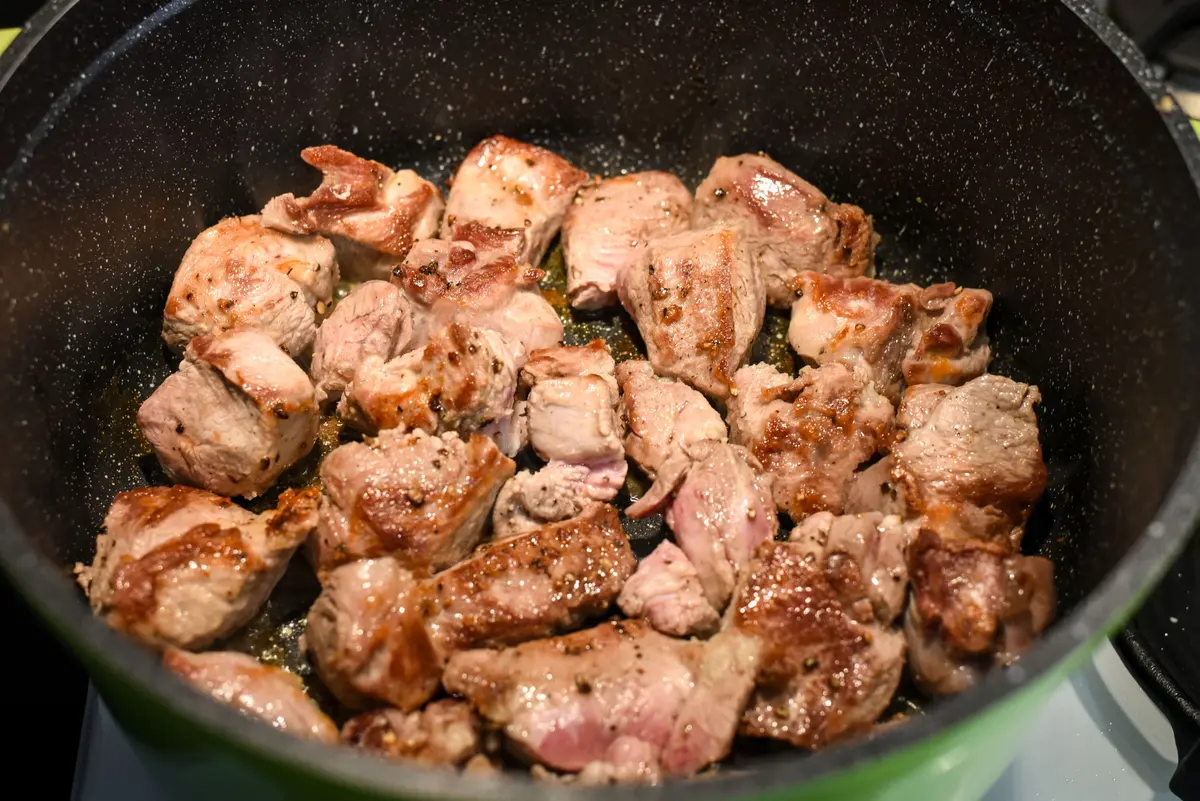
Take your time browning the lamb cubes, which will add a rich flavor to the sauce. Audrey Le Goff
Heat the olive oil in a large heavy bottom pot or Dutch oven over medium-high heat. When the oil is sizzling, add the lamb cubes and brown them for about 3 minutes on each side. Do not rush this process; the lamb pieces should develop a nice brown crust.
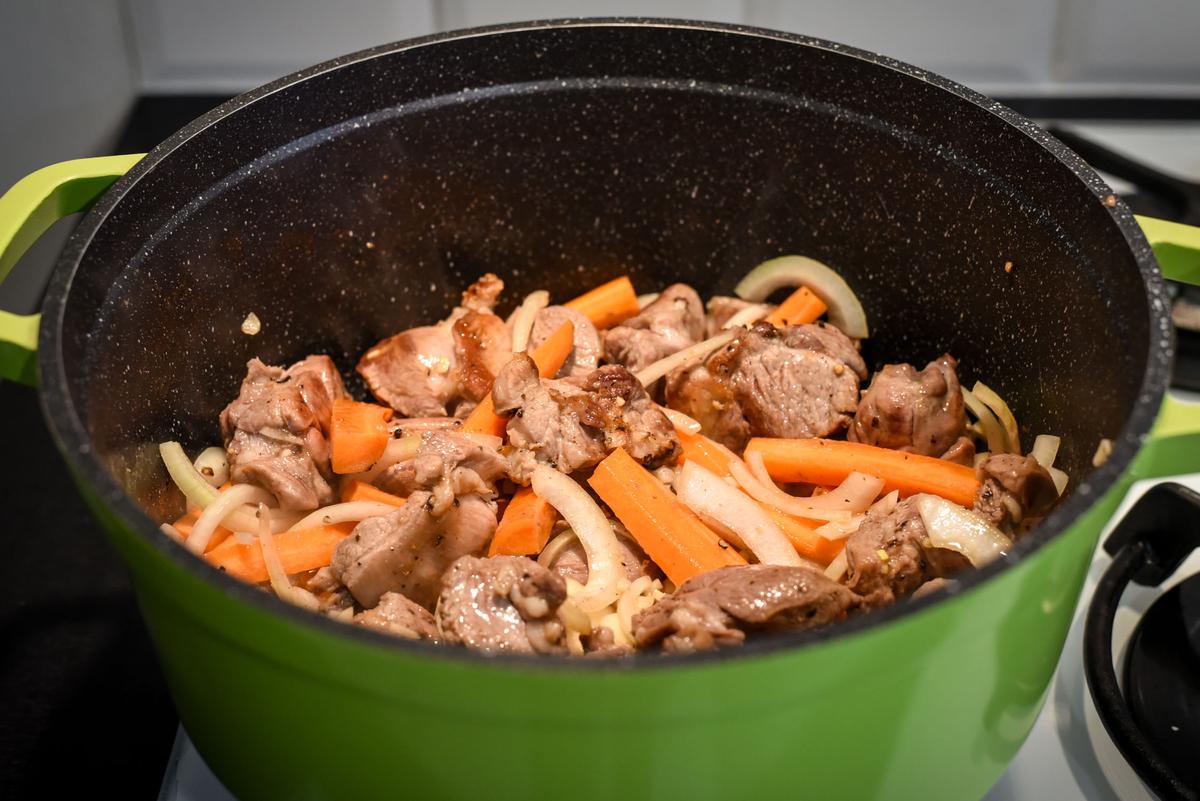
Carrots should simmer as long as the meat does to make them soft and tender. Audrey Le Goff
After the lamb is browned, add the carrots, onion, and garlic. Stir and sauté for 2 minutes. Add the tomato paste, and stir to coat. Add the flour, and stir to coat until no dry flour remains. Add the bay leaf, thyme, white wine, and stock. Stir, cover with a lid, and bring to a boil. When the liquid is boiling, lower the heat to medium-low and simmer, covered, for 45 minutes.
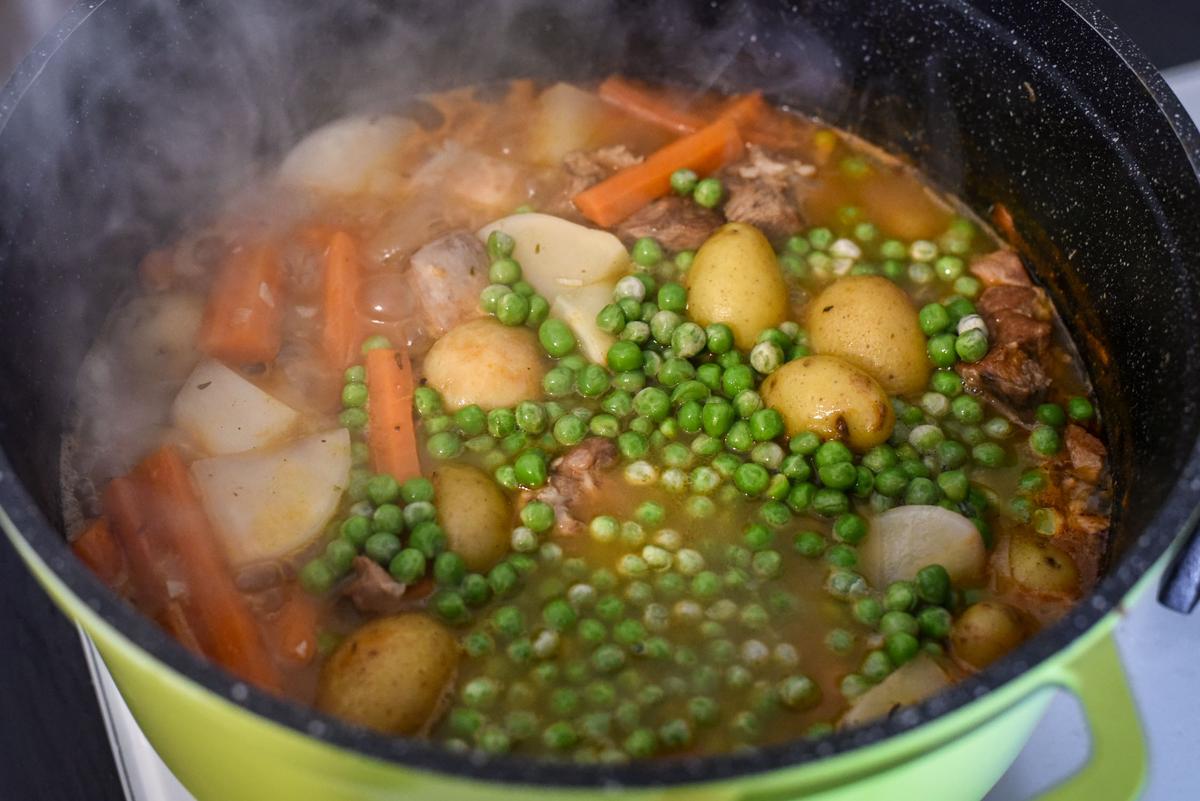
Peas should be the last vegetable added, just a few minutes before serving, to avoid overcooking them. Audrey Le Goff
Add the potatoes and turnips, and simmer for 15 more minutes. Finally, add the peas and cook until they rise to the top (1 to 2 minutes for fresh peas, 3 to 4 minutes for frozen). Taste and adjust seasoning if needed.
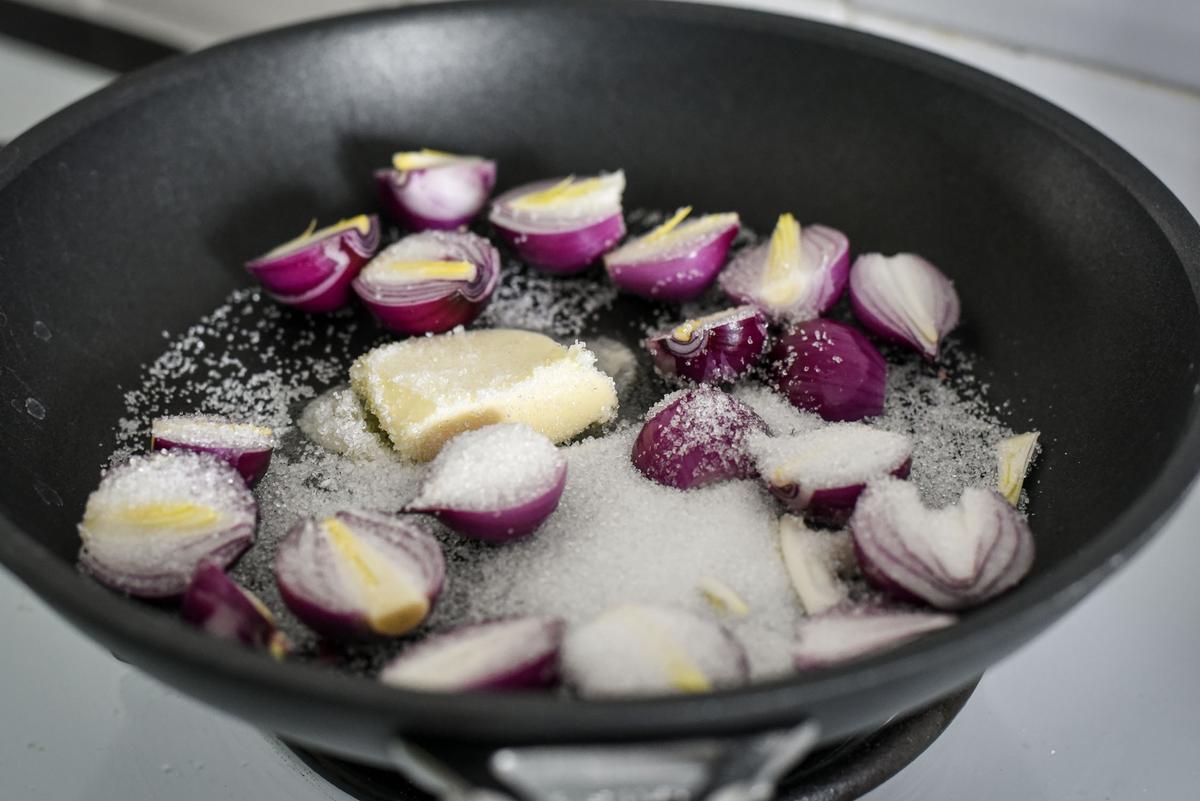
Caramelizing the pearl onions, with the help of some butter and sugar, adds bursts of silky sweetness to the dish. Audrey Le Goff
In a separate pan, heat the butter, sugar, pearl onions, and 3 tablespoons of water over medium heat. Let the butter and sugar melt and slowly caramelize the onions. Cook until all the water has evaporated and the onions are caramelized.
For serving, ladle the stew into serving bowls and top each with a few caramelized onions and fresh parsley leaves.

